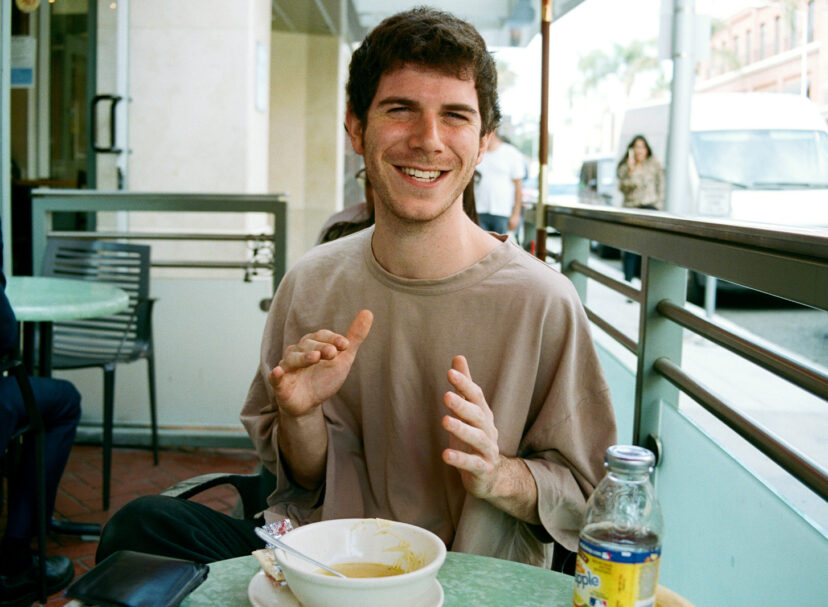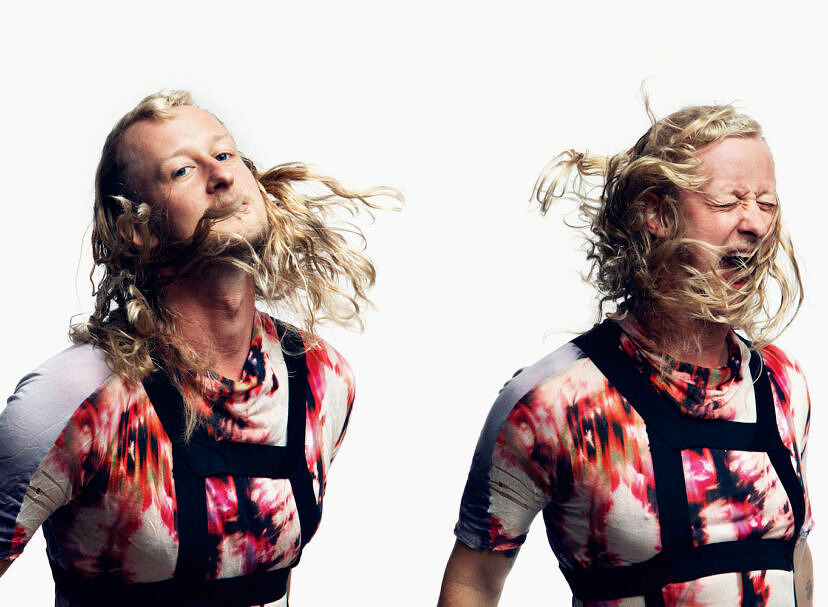Text and Interview: Alec Coiro
Photos: Seth Thomas
Clothing by Correll Correll
I met Lily and Abigail Chapin along on the rim of New Jersey with the skyline of Manhattan all around us. The plan was to photograph the two folk-singing sisters wearing clothes from the new collection by another team of brilliant sisters, Correll Correll. The location befitted the Chapin Sisters’ folkways because Abigail and Lily are both of the city but also can speak (sing?) to and for and of the country that surrounds it, as all real folksingers have, going all the way back to New Yorker and voice of the American dispossessed, Woodie Guthrie.
There are several approaches one could take when exploring why the Chapin Sisters are so compelling, but I find their dynamism to be the most salient. The Chapin sisters are inspired songwriters — a fact that comes through emphatically on the latest album— but they also impart just as much meaning to the covers they choose. And while Abigail and Lily individually have haunting and unique voices, it is the Chapin Sisters’ harmonies that provide that rare and special transcendence that transports listeners out of themselves.
Before the sunset and they had to get their respective newborns back home, the sisters told me about the creation of their new album “Today’s Not Yesterday,” some of the bigger hits from their previous albums, some famous collaborators, and what it’s like being young mothers.

You guys have already created so many cultural touchstones, it’s hard to generalize about where our readers might have first become familiar with you. Your cover of [Britney Spears’s] “Toxic” caused quite a stir. What about that particular pop song fit with your style?
Lily: “Toxic” was on the radio right around the time we were thinking of starting a band. We were attracted to the idea of the machine behind Britney Spears, that she as the ultimate pop sensation of that moment was an instrument for the best tinkerers and craftspeople of the trade that is pop music. The bottom line is that it took quite a few people to put that song together, to pump it up with all of its layers. Our interest was in stripping those away and seeing what was left. In some cases with pop songs there’s not much left after you take off the bells and whistles but with Toxic turns out a good song is a good song.
The Everly Brothers album was another big one; was it important to you that the Everly Brothers are also siblings? Is there something about sibling collaboration that only other siblings fully get? Or/and is there something about folk music that makes it more of a space for family collaborations?
Abigail: For us it was more about their harmony and songs than their particular sibling relationship- we were still trying to find our identity as a duo after the departure of our sister Jessica, who left the band after her daughter was born. We kind of gave ourselves the homework of close listening to the Everly Brothers as a master class in two-part harmony singing and songwriting, and the project blossomed into the album. At the time they kind of seemed a little bit forgotten to history for how important and popular they had been in their day. Their place in history as early 60’s mega-stars and heartthrobs gets overshadowed by the Beatles’ arrival so soon after. They never quite regained their status after that. It must have been in the cultural collective unconscious, though, because ours was one of three Everly Brothers covers albums to come out that year. As for sibling collaboration, the Everlys had a famously contentious relationship, which is completely hidden in their incredibly harmonious music. Lily and I are the opposite, we’re incredibly good friends, but I think that kind of sums up the sibling bond pretty well— that coming from the same place, physically and experientially, outweighs everything else in the end, and the similarities are stronger than the differences.

coming from the same place, physically and experientially, outweighs everything else in the end, and the similarities are stronger than the differences

Third on the list of touchstones where our readers first became familiar with you was probably touring with Zooey Deschanel and “She & Him.” How did that come to pass and what was it like? I imagine it was a bit of a departure.
Lily: We toured with She & Him over a span of a few years. We shared a love of vocal harmonies with Zooey and Matt, and we were able to perform with them all over the world. A highlight of this time was recording a version of “Unchained Melody” in three-part harmony with Zooey (and Matt on guitar). We had worked this arrangement out live on tour and we recorded it for their “Classics” album. We shared a love of doo-wop music, standards and classic country that actually felt like a seamless transition from the work we were doing as a trio with our sister Jessica, and then as a duo later. We actually played some of our first shows as a duo opening for She & Him on these tours and then we would run back-stage, change our clothes and re-emerge as band members for the headliner.
Did the move from L.A. to N.Y.C change your sound? What about you both having just become mothers? I guess broadly what I’m asking is how much does your songwriting reflect the different stages and events in your lives?
Abigail: Our motherhood is so new that we haven’t fully explored what changes it will bring to our music, but it’s such a life-altering situation in all ways that it’s hard to imagine it doesn’t change everything. As for our move, I think it did change our sound. We had a pretty steady band in LA, and our songwriting was influenced by rehearsals with them. We have an amazing NYC band as well, but more often when we’re touring we play duo shows and with motherhood and life we often rehearse and work on songs just the two of us. We went back to California to record the latest record, because LA is such a part of our identity- the bulk of our history as a band is there.
The title “Today’s not Yesterday” suggests an unwillingness to linger over the past. Is this the case? And what do you have planned for the future?
Lily: Always the process between two records can feel a bit like charting a course through an ocean – we know what land is behind us, and we have dreams of what lies ahead, but we don’t know until we arrive. That may be a lame answer, but as new mothers and artists who have changed our sound a few times, we are hesitant to expound upon the future – we will take the future as it comes. Today we are happy to be able to sing and play and love these little girls who have just arrived on planet earth.

